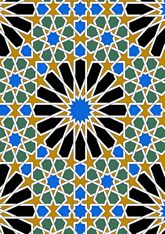Traditionally, truth, goodness and beauty are properties of all being, of everything that exists, in one degree or another. Truth is being as known - the correspondence and coherence of the idea and the reality. Goodness is being as willed - acting in accordance with the fullness of that which is. What, then, is beauty? Beauty is being as enjoyed, as rejoiced in – that which, when seen, pleases. This is why Etienne Gilson can say that man is a creature “who knows other beings as true, who loves them as good, and who enjoys them as beautiful” (
The Unity of Philosophical Experience, p. 255).
The association of beauty with joy is important to reflect upon. What is this joy that beauty gives? It is surely the feeling we get of liberation. “For the experiences which should be produced by that which is really beautiful are wonder, and sweet amazement, and desire, and a pleasant fluttering of the wings of the soul” (Plotinus, Ennead 1:6). Beauty liberates or expands us beyond the boundaries of the self.
At the level of
eros, we recognize that there are two main ways to expand the self by uniting it with a desired beauty. The feminine way is to receive the beautiful into ourselves. The masculine way is to project or inject the self into the beautiful. At the spiritual level we do both, and both ways are rooted in God, who both receives himself and gives himself in the three Persons.
In order to recognize something as beautiful, there has already to be some connection with it, some element of recognition, as well as an inclination to affirm if not unite ourselves with it. In that sense, beauty cannot be separated from truth and goodness, and from the faculties of knowledge and will. There is something in us by which we judge the beautiful to be such, and this means that we have the essence of beauty already within ourselves, even though it is also beyond us.
Image: Stars in the Water, by Rosie Caldecott
 If you enjoy geometrical patterns or colouring or even if you are contructing a tiling system for your kitchen or bathroom, you might want to look at this site from Altair Design. Teachers and parents might like to look too, to see some activities to get kids painlessly interested in geometry. Explore the site - it has a huge variety of patterns that you can colour online, a competition you can enter, and a gallery of the best examples done by other people. The middle button at the top gives you some history and context for the site.
If you enjoy geometrical patterns or colouring or even if you are contructing a tiling system for your kitchen or bathroom, you might want to look at this site from Altair Design. Teachers and parents might like to look too, to see some activities to get kids painlessly interested in geometry. Explore the site - it has a huge variety of patterns that you can colour online, a competition you can enter, and a gallery of the best examples done by other people. The middle button at the top gives you some history and context for the site.



